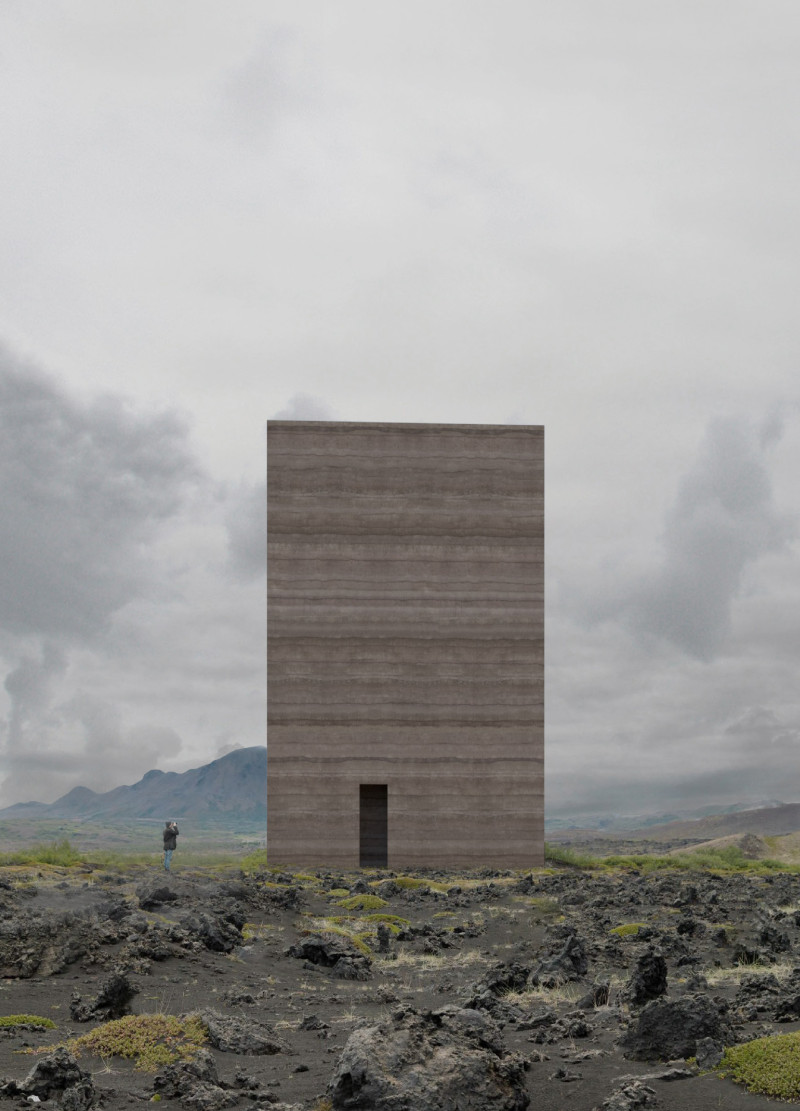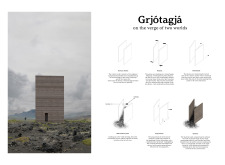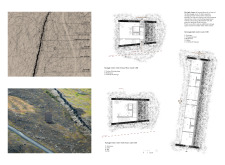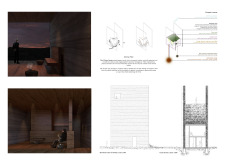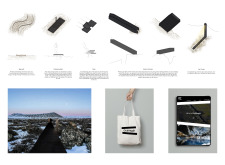5 key facts about this project
Grjótagjá is a visitor center located near the Kvennagjá caves, surrounded by striking geological formations. The design revolves around the theme of tectonic plates, which serves as a metaphor for the relationship between the natural world and human construction. Two upright plates stand adjacent to each other, angled in a way that mirrors the movement of the Earth's lithospheric plates. This concept creates a space that encourages a deeper connection between visitors and their environment.
Design Concept
The architecture of Grjótagjá invites reflection on the forces that shape our planet. The plates not only serve as structural elements but also act as guides for visitors, pointing their attention toward significant natural features like the cave entrances. This careful thought in orientation allows for an engaging exploration of both the built and natural surroundings, encouraging interaction and curiosity.
Functional Layout
Functionality is central to the design of the visitor center. It includes separate changing rooms and a locker area, allowing visitors to transition smoothly into the cave bathing experience. The layout is straightforward and user-friendly, with distinct areas that lead visitors along a circular path. This arrangement keeps the flow of movement intuitive and enhances the overall experience within the space.
Material Use
The primary material used in Grjótagjá is rammed earth. This choice reflects a strong commitment to sustainability and environmental friendliness. By incorporating locally sourced materials, the construction process reduces its carbon footprint. Rammed earth provides not only visual harmony with the surroundings but also effective thermal properties, making the structure comfortable throughout various conditions.
Spatial Experience
A notable feature of the design is the lookout staircase, which raises visitors above the landscape. This element offers a unique viewpoint and creates a sense of being suspended over the ravine. As visitors ascend the staircase, they are rewarded with expansive views that highlight the interplay between the architectural form and the geological features of the area, enriching their understanding of both the natural and constructed environments.


